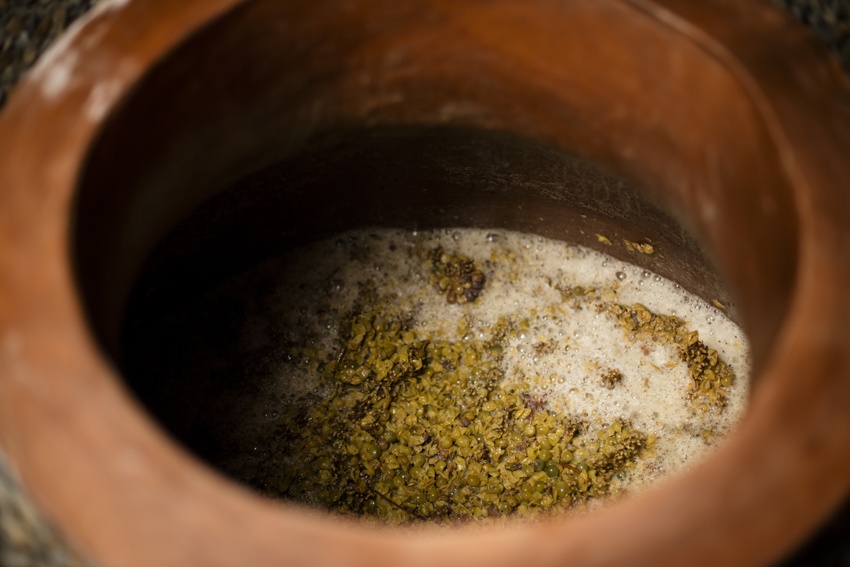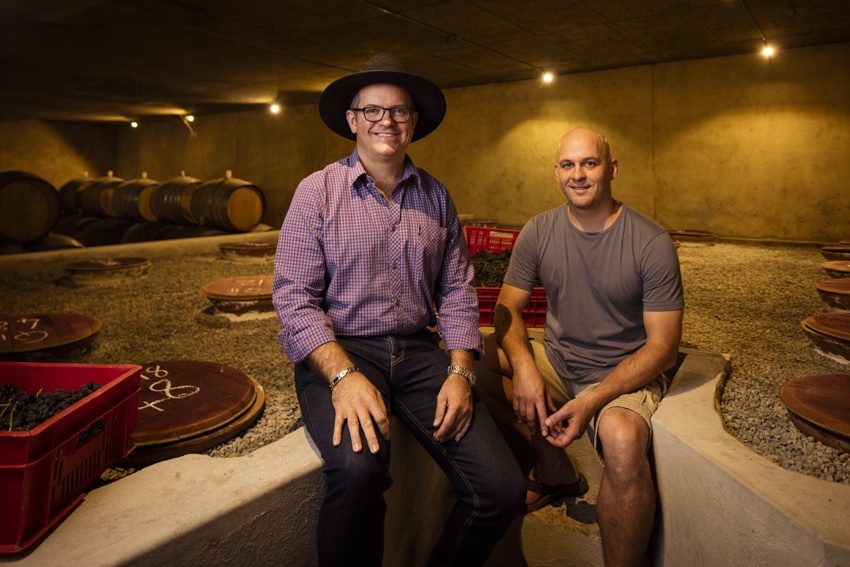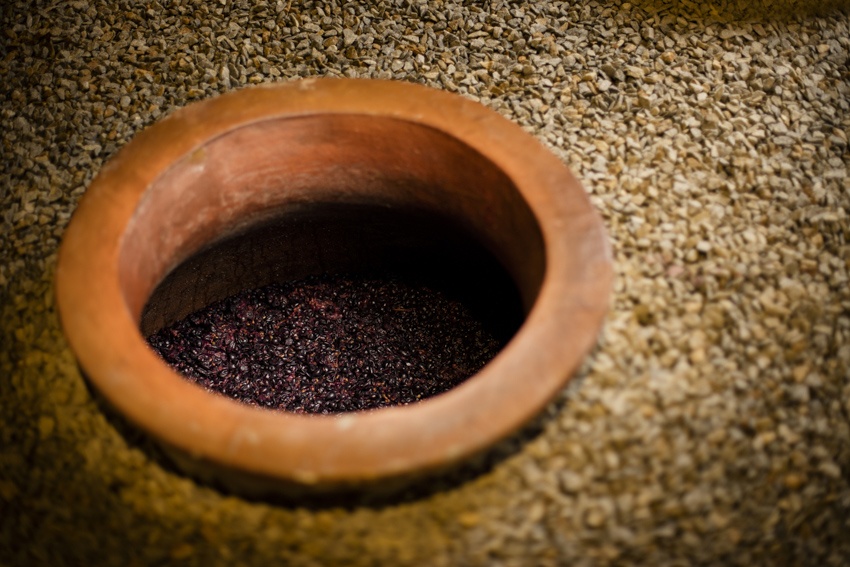Ancient wisdom
Georgia features a lot in popular culture. It’s in song titles – like the one Ray Charles made famous decades ago with his old, sweet song “Keeps Georgia on my mind” – or the melancholy 1970’s tune made famous by singer Brook Benton: “Rainy Night in Georgia”.
Atlanta, Georgia is home to CNN, the 24 hour global news operation started by Ted Turner. It’s also where worldwide beverage giant Coca-Cola is headquartered.

The historic first ever Chenin Blanc fermenting on skins in qvevri at Avondale.
But that’s not the relevant Georgia to this tale. The former republic near turkey and Azerbaijan, annexed by Russia in 1921, is. This Georgia no doubt has rainy nights too and also prompts fond memories – but the memories and wisdom are ancient, stretching back 8 000 years or so, in historic winemaking traditions which are now rapidly attracting more and more attention. Winemaker at biodynamic Avondale in Paarl, Corné Marais touched down in Tbilisi in 2017 before heading to the winemaking areas of Imereti and Kakheti in search of qvevri.
Ever thoughtful Avondale proprietor Johnathan Grieve said this was another step in their natural journey. “It’s something Corné and I have spoken about on and off for probably six years: the influence of oak on wine and finding an alternative to it.” They had tried to mitigate the influence of oak by going older and larger in volume – as well as commissioning local potters to custom make large amphora, from clay found on Avondale. Some were disastrous... leaking like proverbial sieves! “They’re used for pot plants now,” Grieve admitted.
“The thing about qvevri,” Grieve said (with an aside that the pronunciation is kwe-vree...) “is that they are buried to their necks in soil and stones – and that they breathe. Qvevri are the oldest dated containers for winemaking – and in Georgia this ancient craft is passed on from generation to generation with the vessels still made by hand, and still fired using ancient methods.” They also last for decades, if not centuries.

Avondale proprietor Johnathan Grieve and winemaker Corne Marais.
Local Georgian winemaker John Wurdeman assisted Marais in making the right contacts – and provided an introduction to qvevri master, Nodari Kapanadze. In January 2018 two shipping containers with 24 handmade clay qvevri firmly wedged in with old car tyres were delivered just in time for harvest.
“Because it’s a handmade product they vary slightly in size,” Grieve said. So, from around 800-litre capacity to 1000-litres.
“Getting them settled in was the fastest building project we’ve ever tackled at Avondale!” After receiving a coating of lime, the qvevri were stacked upright, with 50 tons of soil from elsewhere on the farm packed around them, up to the vessels necks, providing support. “It just would not have been right to have Phillippi building sand...” Grieve quipped.
The proof in any pudding, as the cliché holds, is in the eating. Grieve and Marais recently lined up a few samples of 2018 Chenin Blanc for an early demonstration.
Sample one was from barrel, two from locally produced amphora but made with clear juice – no skins. Sample three was from qvevri but also clear juice while four was qvevri made with the Chenin Blanc skins present during fermentation. Five saw whole bunches and some stems go into the qvevri and sample six was a ringer – Semillon whole bunches in qvevri.

Buried treasure... Shiraz in qvevri.
As one tasted noted succinctly after running through all the examples: “Mind... blown!”
The remarkable take out is not just the differences in aromas but flavour with the most profound difference being textural. The wines from qvevri just have more palateweight, depth and presence in the mouth. The influence of oxygen is obvious in the oxidative (not oxidised!) notes but it’s in the sheer “feel” of the wine that it impresses.
“The differences are amazing – and we are not just happy but delighted and thrilled with the results,” Marais and Grieve said. “We’re happy that we have captured the true essence of the grape,” Grieve said.
It requires patience with the spontaneous/natural ferment often taking months to complete – a radical difference from a week or two when commercial yeast is used. But it’s something that Grieve and his team have been doing at Avondale for years. Anything done on the farm is done with forethought and consideration for the environment, using natural energy. Qvevri are ancient receptacles from halfway around the world but they are here to stay for many decades and will no doubt play a significant role in the continuing natural evolution of Avondale wines.
-Fiona McDonald